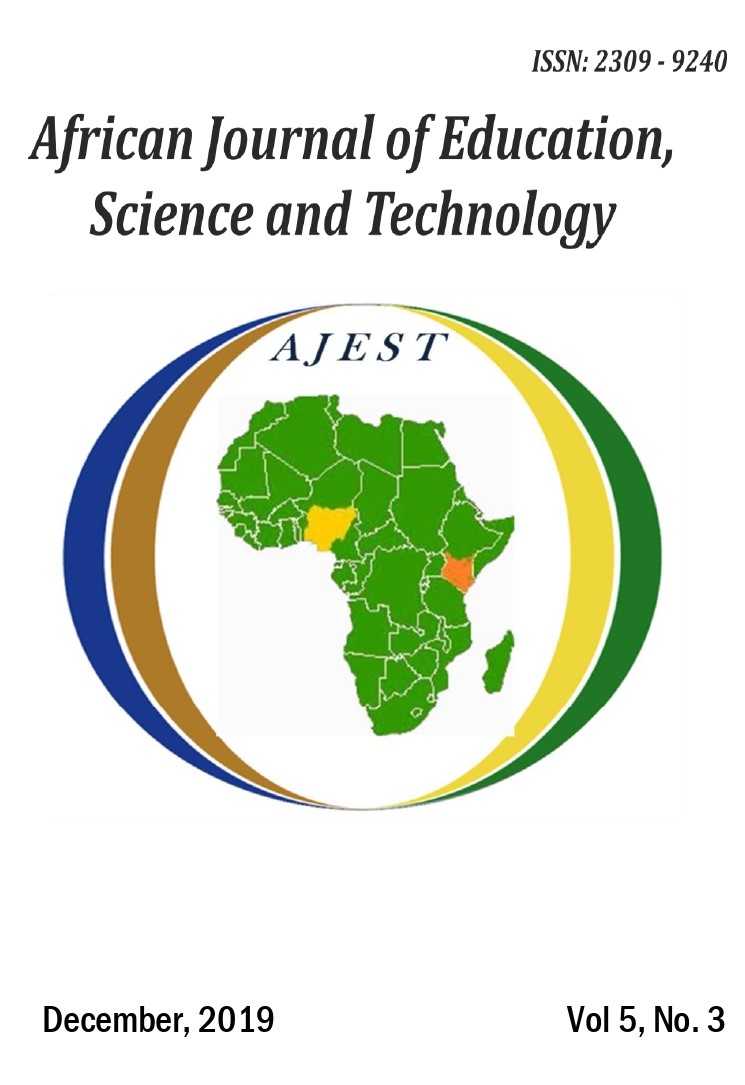Construction of a Five-Level V-Dimensional Modified Third Order Rotatable Designs using a Pair of Pairwise Balanced Designs
##article.abstract##
Rotatable designs are devised for use of response surfaces. Rotatability is evidently a greatly popular property for Response Surface Methodology (RSM). RSM is a group of statistical and mathematical techniques valuable for developing, improving and optimizing models and processes. Experimentation of any kind usually requires resources of which they may be limited due to either in availability or high cost of acquisition. To reduce on costs of an experiment one has to make a better preference of the experimental design prior to the experiment itself. An appropriate design that would provide relatively smaller number of the design points of the response at particular points of significance is essential. The aim of this study was to construct modified third order rotatable designs (MTORDs) by use of Pairwise Balanced designs in order to address the problem of the design points. The objective of the study was to construct a five-level v-dimensional modified TORD by using PBD. The five-level v-dimensional modified third order rotatable designs is constructed by use of a suitably chosen pair of Pairwise Balanced Designs by repeating the set of the design points generated from each of the designs a constant number of times. These points were combined together with a number of central points without any additional set of points. In this study, some modified third order rotatable design constructed through pairwise balanced designs were obtained. In conclusion, the modified TORD constructed using PBD yield relatively smaller numeral of the design points as compared to the corresponding existing designs. Other studies that could possibly lead to designs having fewer numeral design points than what is obtained from the present study could be explored. The study recommends further studies on latest methods of construction of modified higher order rotatable designs and applications on this area.
References
Bennett, F. E., Colbourn, C. J. and Mullin R. C. (1998). Quintessential pairwise balanced designs. J. Statist. Plann. Inference, 72, 15- 66
Box,G. E. P. and Hunter, J. S. (1957). Multifactor experimental designs for exploring response surfaces. Ann. Math. Statist., 28, 195-241.
Box, G. E. P. and Draper, N. R. (1963). The choice of second order rotatable designs. Biometrika, 50, 335-352
Das, M. N. and Narasimham, V. L. (1962). Designs and analysis of experiments. Wiley Eastern Limited.
Dukes, P. J. and Ling, A. C. H. (2014) pairwise balanced designs with prescribed minimum dimension. Discrete comput. Geom. 51, 485-494
Dukes, P. J. and Niezen, J. (2015) pairwise balanced designs of dimension three. Australasian Journal of Combinatorics, 61, 98-113
Kosgei, M. K., Koske, J. K. and Mutiso, J. M. (2013). Construction of five-level modified third order rotatable design using a pair of balanced incomplete block designs. Journal of computational intelligence and systems sciences, 1, 10-18.
Victorbabu, Re. B. (2006). Modified second order slope-rotatable designs using pairwise balanced designs. Proceedings of Andhra Pradesh Akademi of sciences,9(1), 19-23
Victorbabu, Re. B. (2008). Modified second order slope-rotatable designs with equispaced levels using pairwise balanced designs. Ultra Scientists of Phys. Sci. 20(2), 257-262
Victorbabu, Re. B. (2009). Construction of modified second order response surface designs, rotatable designs, rotatable designs with equi-spaced doses, pairwise balanced desgns. Int. J. Agricult. Stat. Sci., 5, 425-435.
Victorbabu, Re. B. (2011). A new method of Construction of second order slope-rotatable designs using incomplete block designs with unequal block sizes. ProbStat Forum, 04, 44-53.
Victorbabu, Re. B. and Rajyalakshmi, K. (2012). A new method of construction of robust second order slope rotatable designs using pairwise balanced designs. Open Journal Statistics, 2, 319-327.
Victorbabu, Re. B. and Narasimham, V. K. (1993). Construction of modified second order slope rotatable designs using pairwise balanced designs. Journal of the Indian Society of agricultural Statistics, 45, 200-205.
Victorbabu, Re. B. and Surekha, Ch. V. V. S (2012). Construction of measure of second order slope rotatable designs using pairwise balanced designs. International journal of Statistics and analysis, 2, 97-106.
Wilson, R. M. (1972). An existence theory for pairwise balanced designs: I, composition theorems and morphisms. Journal of Combinatorial Theory, 13, 220-245
Wilson, R. M. (1972). An existence theory for pairwise balanced designs: II, the structure of PBD-closed sets and existence of conjectures. Journal of Combinatorial Theory, 13, 246-273
Wilson, R. M. (1974). Construction and uses of pairwise balanced designs, mathematical centrum tracts Theory, 55, 18-41
Wilson, R. M. (1975). An existence theory for pairwise balanced designs: III, Proof of the existence conjectures. J. Combinatorial Theory, 18, 71-79


